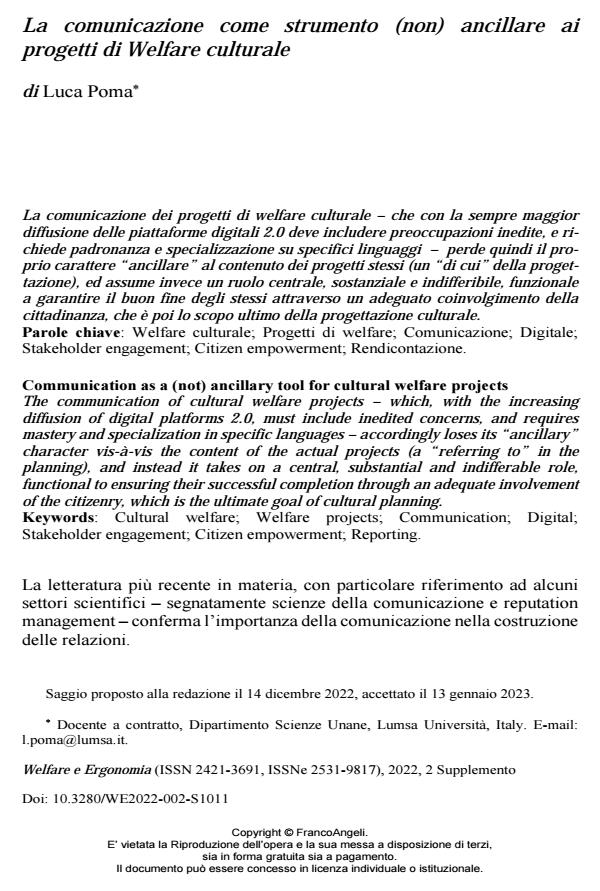Communication as a (not) ancillary tool for cultural welfare projects
Journal title WELFARE E ERGONOMIA
Author/s Luca Poma
Publishing Year 2023 Issue 2022/2 Suppl.
Language Italian Pages 5 P. 121-125 File size 146 KB
DOI 10.3280/WE2022-002-S1011
DOI is like a bar code for intellectual property: to have more infomation
click here
Below, you can see the article first page
If you want to buy this article in PDF format, you can do it, following the instructions to buy download credits

FrancoAngeli is member of Publishers International Linking Association, Inc (PILA), a not-for-profit association which run the CrossRef service enabling links to and from online scholarly content.
The communication of cultural welfare projects - which, with the increasing diffusion of digital platforms 2.0, must include inedited concerns, and requires mastery and specialization in specific languages - accordingly loses its "ancillary" character vis-à-vis the content of the actual projects (a "referring to" in the planning), and instead it takes on a central, substantial and indifferable role, functional to ensuring their successful completion through an adequate involvement of the citizenry, which is the ultimate goal of cultural planning.
Keywords: Cultural welfare; Welfare projects; Communication; Digital; Stakeholder engagement; Citizen empowerment; Reporting.
Luca Poma, La comunicazione come strumento (non) ancillare ai progetti di Welfare culturale in "WELFARE E ERGONOMIA" 2 Suppl./2022, pp 121-125, DOI: 10.3280/WE2022-002-S1011